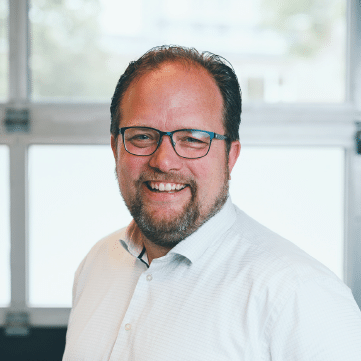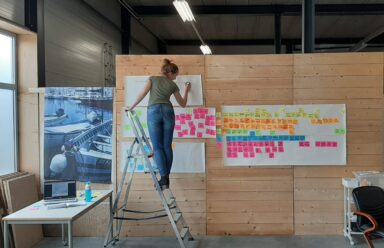Usability testing: Not difficult, very important!
This blogpost is written by old-GriDDer Inge Nahuis
The value of user research on websites, systems or other products is clear to most people. It is not difficult to see that user research helps you to get insight into expectations of users. It helps you to achieve a better user experience and a higher customer satisfaction. Nevertheless, user research is not common practice and is often forgotten.
Usability testing can have a huge added value and save costs. Testing during a project means that errors and bottlenecks can be discovered in an early stage and that your product will meet user needs. This will lead to lower bounce rates (leaving a website directly after entering), higher conversions and users that will recommend your product to others.
Therefore it is essential that testing will be included in all development stages of, for example, a website or tool. With this article I will show that testing doesn’t have to be difficult.
Isn’t that very time-consuming, difficult and costly?!
Why is usability testing still relatively uncommon? There are some prejudices about usability testing:
- It takes a lot of time. “I have to wait until my website is finished and it slows down the implementation process with week-long tests.”
- It is complicated. “For doing tests you need a scientific background and extensive expertise.”
- It is expensive. “To perform usability testing you need a lot of people, expensive equipment and locations.”
These prejudices are understandable, tests can quickly become too extensive. What is less known, is that even without big budgets and a team of specialists, you can still do usability testing. A test that is performed with hundreds of respondents and a careful, scientific setup will yield more reliable results than a simple test. That does not mean you should skip usability testing altogether.
By testing often and keeping them small, the size and budget will be limited and costs will be saved. By starting tests in early stages and by testing often, errors and bottlenecks can be discovered at an early stage and it prevents that your product needs to be adjusted in a late stage by expensive developers. You can already start testing when there is just a first sketch. For example, with paper prototyping you do not even need graphic designs.
Executing a simple usability test
For a simple usability test, which is easy to repeat throughout the project, you only need a little time, a computer and software. Below I describe an example of how to develop and perform a simple test.
- Create tasks and scenarios
Tasks are activities you want your users to execute. Scenarios are scripts that give context and will be shared with your respondents. For a simple test you need around 5 tasks with corresponding scenarios.
Examples:- Task: Make an appointment with a doctor online.
- Scenario: Because of a medical issue, you want to make an appointment with your general practitioner. You want to make this appointment via her website. Make an appointment with your general practitioner for Wednesday November 23rd at 2 o’clock in the afternoon.
- Invite respondents
Make sure you invite a small group of respondents per test, for each test a group of about 5 respondents is sufficient. It is useful if these respondents are representative of the target group (especially if there is some know-how needed to understand the tasks), but testing with less representative users is always better than not testing at all. - Test set-up
Let the respondent perform a test on a computer or laptop (or even on paper) in a neutral environment. The computer must be equipped with internet access, microphone, keyboard, mouse and screen recording / sharing software (use professional screen recording software like Camtasia or use conferencing tools such as Skype or GoToMeeting).
If you test a website, make sure that the user can view it in a browser of his / her choice. Make sure the scenarios are printed out and are on the table. - During the test
As facilitator it is important to make clear what the goal of the test is and to give an introduction and the test setup. Use the following steps during the test:- Preparation. Set up the correct starting screen on the computer and start the screen recorder.
Introduction. Explain the purpose of the test and emphasize that the product is tested, not the respondent. Ask the respondent to think aloud while he/she performs the tasks. Give this introduction based on a pre-prepared script. - Setup and scenarios. Explain the set-up of the test and hand over the scenarios.
- Run scenarios. Allow the user to quietly carry out the tasks and avoid influencing the respondent. Only when he / she really does know what to do anymore, help him / her.
- Concluding questions. Additionally, if needed you can ask a number of demographic questions or evaluation questions at the end of the test.
- Wrap up. Thank the respondent for participation and ask whether there are any questions.
- Shut down. Stop the recording and save it. Make sure to reset all settings and changes to default before the next test starts.
- Preparation. Set up the correct starting screen on the computer and start the screen recorder.
- Results and insights
Make sure to make notes during the test and when watching the recording. Create a list of most important usability issues the participant encountered after each test. It is important to look in particular at where the participant got stuck and avoid doing 1 on 1 what the participant is saying. After evaluating all sessions, create a list of issues that need to be resolved in the coming month.
 The setup above only describes an example setup for a simple test. If you want to know more about simple usability testing and if you need a complete check on your setup, read the book “Rocket surgery made easy” by Steve Krug. In this book you will learn how to create a simple test setup, without needing a lot of expertise and scientific background.
The setup above only describes an example setup for a simple test. If you want to know more about simple usability testing and if you need a complete check on your setup, read the book “Rocket surgery made easy” by Steve Krug. In this book you will learn how to create a simple test setup, without needing a lot of expertise and scientific background.
Need help?
Depending on the situation, size, and targets a different method of testing might be more suitable. For example, it may well be that a survey, mouse tracking, card sorting, web analytics or multivariate study will be much more effective to answer your questions. GriDD can help you to make a choice and set-up.
GriDD has extensive experience in all kinds of user testing in situations with varying conditions. Need help setting up a test or want to carry out a more extensive test? Please contact us.
 GriDD
GriDD 


